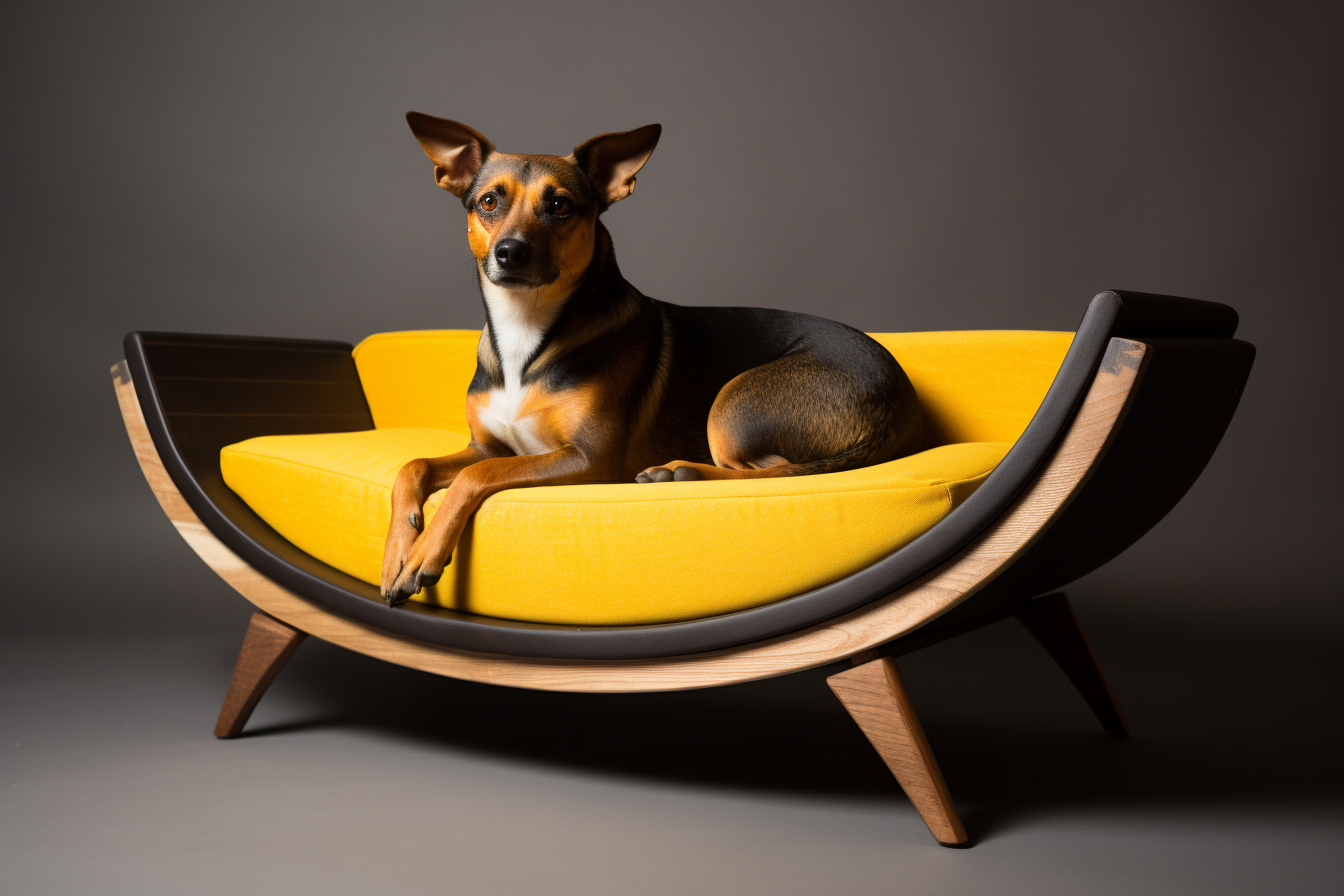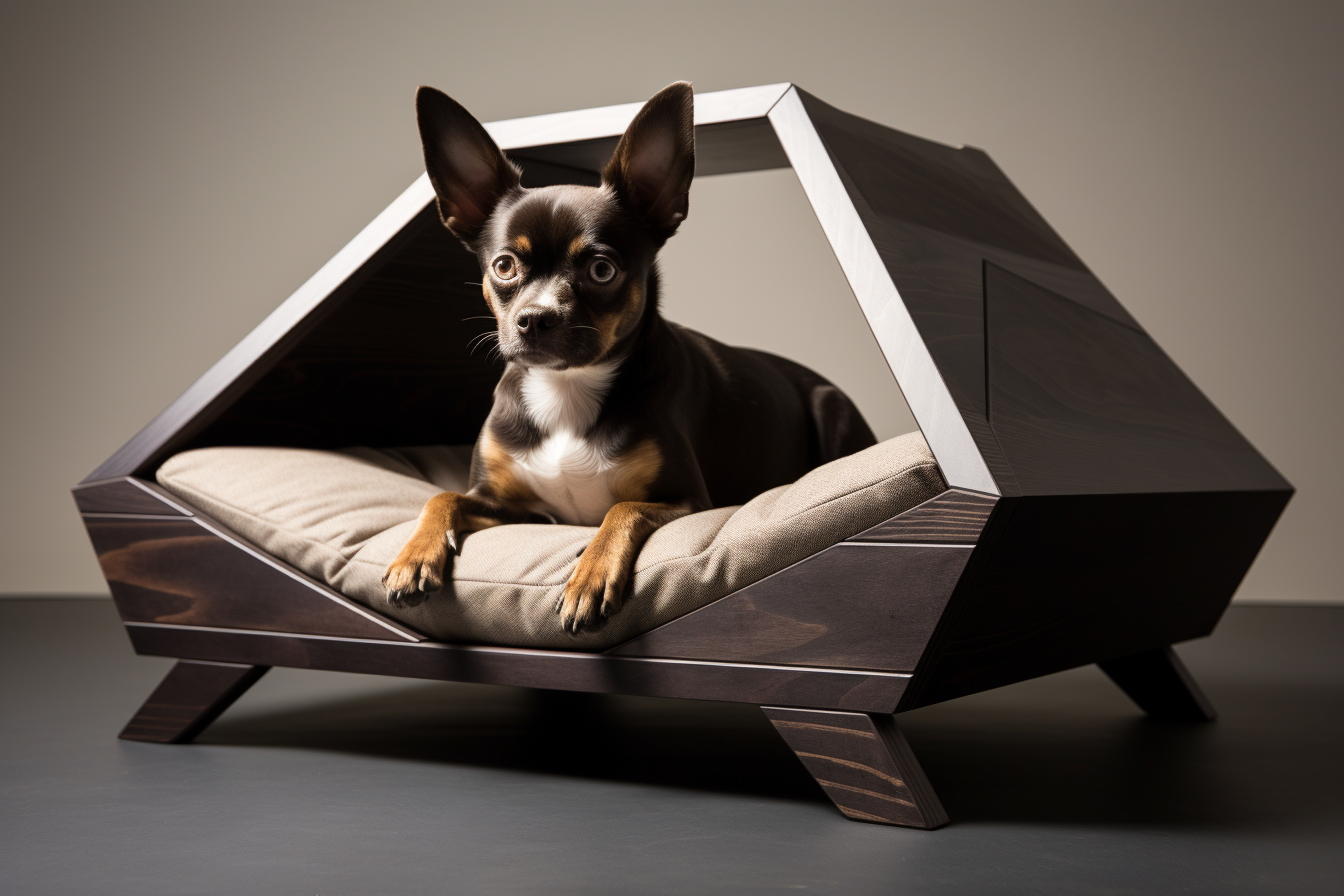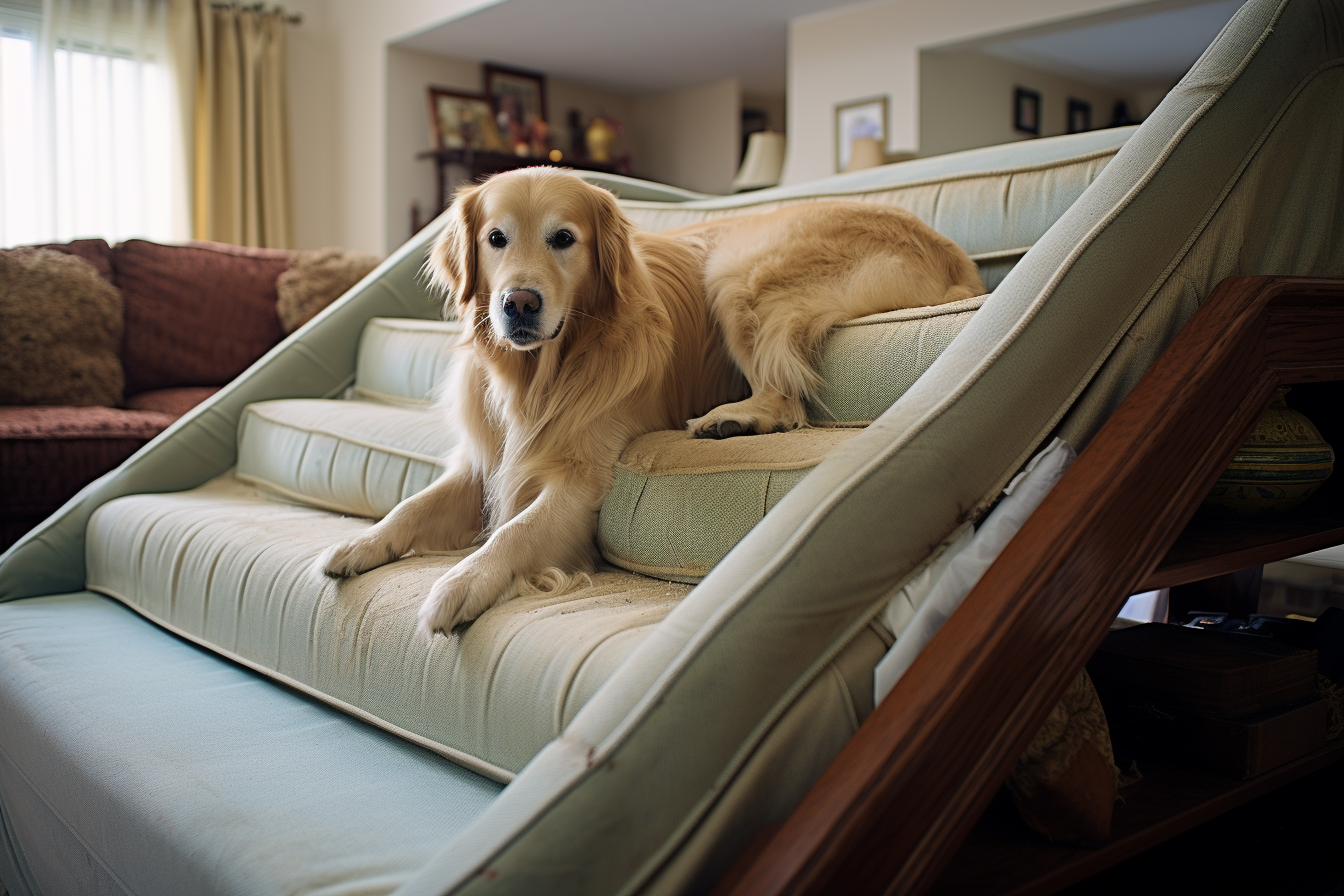Many dog owners wonder if buying a dog bed is really a necessity or just an optional indulgence. This guide will cover when it’s worth investing in a dog bed for your canine companion’s health and happiness. We’ll outline the pros and cons of dog beds, examine when they are most beneficial during a dog’s life, provide tips for choosing the right type of bed, and answer common questions dog owners have. Read on for a complete perspective on whether purchasing a bed is important for your pup.
Table of Contents
ToggleThe Case For Buying a Dog Bed
Here are the primary advantages of providing a dog with their own designated bed:
Promotes Quality Sleep
Dogs sleep 12-14 hours per day on average. Having a comfortable, dedicated sleeping space caters to their natural sleep needs versus just resting on the floor.
Supports Joint Health
Orthopedic memory foam or cushioned beds support joint health and alleviate discomfort from arthritis, hip dysplasia, and aging.
Provides Security
A dog bed gives anxious or protective dogs their own “den” territory offering security and refuge.
Avoids Furniture Damage
Discourages scratching or gathering on furniture to instead use their own bed. Saves your furnishings.
Locates in Most Convenient Space
Allows positioning their bed in the room of your choice wherever you want your dog sleeping.
Easy to Clean
Contain messes and hair in one removable dog bed instead of entire rooms.
Portability
Smaller beds easily move locations or bring along for travel so your dog has familiarity.
For many owners, dog beds provide convenience, cleanliness, furnishings protection, and health support well worth the reasonable investment. But look at your individual dog’s situation.
Reasons You May Not Need a Dog Bed
While most dogs benefit from having their own bed, there are some exceptions to keep in mind:
Your dog shows no interest in beds or resists using them at all.
Your dog has severe anxiety being enclosed and prefers open floor space.
Your dog has orthopedic issues and cannot physically get in or out of a bed easily.
Puppies may be too small for most standard sized beds initially.
Your breed of dog has different sleep preferences, like guard breeds who sleep minimally.
You adopted an older dog who is set in their sleep habits and accepting of hard floors.
Your dog has accidents and you cannot monitor to limit access until fully potty trained.
Your dog has destructive tendencies that lead to consuming bedding when unsupervised.
If your specific situation falls into one of these categories, hold off until your dog shows interest and the obstacles no longer apply before purchasing a bed.
When are Dog Beds Most Important?
Dog beds provide the most benefit at these key life stages:
Puppyhood
Puppies sleep up to 18-20 hours per day. Having their own bed trains them to use it for napping and overnight sleep as they establish habits and routines with their new family. It also focuses destructive chewing on appropriate chew toys versus furniture.
Adolescence
High energy adolescent dogs continue needing ample sleep daily to support their development. Access to their own bed provides a dedicated sleep space during this stage of growth.
Senior Years
A quality orthopedic bed with thick cushioning or memory foam makes a huge difference in managing pain and joint issues to improve comfort and sleep during aging.
Recuperation
After surgery, injury, or medical treatments, allowing a dog to recover on their own familiar soft bed prevents additional stress and discomfort. Easy access is key.
Travel
Portable beds maintain a constant sleep space when traveling or visiting other homes. Reduces stress of new environments.
Anxiety
Nervous dogs find refuge on their beds in scary situations like storms, loud noises or separation anxiety. It becomes a safe space.
During major life transitions or physical changes, dog beds fulfill critical needs to support rest and health.
Pros and Cons of Common Dog Bed Types
Factor in your dog’s needs, preferences and sleeping style when selecting the ideal bed type:
Traditional Rectangular Beds
Pros
- Affordable basic design
- Easy to find standard sizes
- Simply padded surface
Cons
- Not contoured or ergonomic
- Provides less orthopedic support
- No bolsters or walls
Cuddler / Nesting Dog Beds
Pros
- Surrounds with storage-like walls
- Ideal for dogs who “burrow”
- Provides warmth and security
- Stabilizes dogs who sprawl
Cons
- Difficult for some dogs to enter
- Not suited for anxious dogs
- Harder to clean inside
Orthopedic Beds
Pros
- Memory foam supports aging joints
- Relieves pressure points
- Distributes weight evenly
Cons
- Needs occasional re-fluffing
- Retains heat – not ideal for hot climates
- Can be heavy to reposition
Elevated / Cooling Dog Beds
Pros
- Air flows underneath to prevent overheating
- Great for hot weather / breeds
- Easy to clean by wiping down or hosing off
- Discourages bugs and pests
Cons
- Not suitable for cold flooring
- Less cozy and insulated
- Requires sturdy frame
- Usually fixed location
Outdoor Dog Beds
Pros
- Specifically made to withstand outdoor elements
- Wicks moisture and drains easily
- Lightweight and portable design
Cons
- Less cushy padding and insulation
- Needs frequent washing from dirt
- Chewed faster by some dogs
Take into account your dog’s needs, environment, and preferences to select the ideal bed type for their health and comfort.
Tips for Choosing the Right Dog Bed
Follow this criteria to find the perfect dog bed for your pup:
Size
Measure your dog lying down and add 12 inches for small dogs, 24 inches for medium dogs and 36 inches for large breeds. Size allows stretching out without hanging over edges.
Easy Entry/Exit
Make sure sides are low enough for your dog to step into easily. Disable dogs may need flat beds they can walk right onto.
Removable Washable Cover
Look for a zippered machine-washable cover to keep the inner cushion or mattress clean long term.
Raised Orthopedic
If your dog suffers arthritis, joint stiffness or hip dysplasia, look for memory foam or egg crate cushions raised off the floor for comfort and airflow.
Chew Resistant
For younger or destructive chewer dogs, look for ripstop ballistic covers that resist tearing from paws and teeth.
Location
Place your dog’s bed in the room you want them sleeping in and where you spend time for security. Gradually move to desired permanent spot.
Take particular needs into account like joint health, age, chewing tendency and temperature regulation when selecting the ideal dog bed.
Should You Buy Orthopedic Beds?
Orthopedic dog beds provide excellent support for:
Senior Dogs
Memory foam or dense supportive egg crate foam relieves joint stiffness and discomfort from arthritis. Look for beds with a waterproof liner and removable cover.
Dogs with Medical Conditions
Supportive memory foam aids dogs recovering from injuries, surgery, hip dysplasia and other conditions causing pain and stiffness. Offers comforting rest.
Large or Giant Dogs
Big dogs carry more weight, putting additional pressure on joints. Dense memory foam provides even weight distribution and cushioning. Gel foam offers cooling.
Outdoor Dogs
Adding a layer of memory foam over outdoor beds adds comforting cushion for time spent on harder surfaces. Choose waterproof exterior covers.
Orthopedic dog beds support rest and recovery for senior, injured, and large breed dogs especially. Ask your vet if recommended for your dog.
Are Elevated Dog Beds Better?
Elevated dog beds off the floor provide advantages:
Airflow
Raised design allows air to flow underneath preventing dogs from overheating. Great for hot climates. Metal or PVC frames maintain elevation.
Mobility
Elevated orthopedic beds make it easier for dogs with joint stiffness, arthritis and mobility issues to stand up without floor resistance. Gentler on joints.
Outdoor Use
Elevated outdoor beds promote drainage underneath and provide insulation from damp ground. Plastic or coated metal frames resist weather.
Cleanliness
Raised off the floor on a metal, wood or PVC platform base makes it easy to sweep or hose mess underneath. Keep dogs up off dirty garage or patio floors.
Insect Prevention
Elevation and airflow deters fleas, ticks and other pests from crawling up into an outdoor dog’s bedding.
For certain needs, an elevated cot-style bed provides better orthopedic support, weather protection and airflow than a traditional padded mat on the floor.
Should You Add a Dog Bed Topper?
Dog bed toppers add extra comfort and support. Benefits include:
Cushioning
Adding a 1-3 inch memory foam, egg crate or pillow topper makes budget beds plusher. Creates added joint and pressure point relief.
Cooling
Gel foam, cooling gels or perforated latex toppers regulate temperature for hot dogs.
Insulation
Plush feather, wool or faux fur toppers retain body heat, adding warmth. Good for arthritic dogs who feel cold.
Allergies
Replace toppers rather than entire beds to reduce dust mite, mold and dander exposure when dogs sleep.
Replace Toppers
Much cheaper to replace toppers every year or two rather than full beds. Extends bed lifespan.
For affordability and easy customization, toppers supplement dog beds with cooling, cushioning, insulation and other benefits.
Should You Use a Waterproof Liner?
Waterproof liners or covers create an effective moisture barrier:
Incontinent Dogs
Protects beds from spills and accidents for dogs still potty training or who have urinary incontinence.
Older Dogs
As dogs age, incontinence and leaking become more frequent at night. Liners prevent absorbency.
Chewers/Teethers
For chronic dog bed chewers/teethers, a tear-proof liner preserves the bed interior by preventing accessing stuffing.
Liquid Damage
Waterproof liners shield memory foam and stuffing from pet accidents, spilled water and outdoor lawn/dew moisture.
Easy Cleaning
Vinyl, polyurethane coated or PUL fabric liners simply wipe down for quick cleanup versus washing the entire bed.
For certain situations, a waterproof liner preserves dog beds. Just ensure it’s breathable and dogs don’t chew the liner itself.
Should You Buy Used Dog Beds?
Buying a pre-owned dog bed instead of new comes with risks:
Germs
Used beds contain skin cells, bacteria, parasites from mites to fleas and bodily fluids no amount of cleaning eradicates completely.
Allergies
For dogs with dust mite allergies or asthma, a used bed could trigger reactions despite washing.
Odors
Dog beds absorb smells over time that are difficult to fully remove.
Bed Bugs
While rare, used bedding risks exposure to parasitic bed bugs which then infest your home. High heat drying offers some protection.
Quality
Heavily used beds lose loft, tear, and no longer provide support. Damage may not be visible until in use.
No Warranty
With used beds, there are no guarantees. You lose the protections of shopping from reputable brands.
While cheaper, the risks outweigh the benefits of buying used dog beds in most cases. Prioritize your dog’s health.
Do Dogs Need Beds? 6 Key Takeaways:
- Quality orthopedic beds support senior dogs’ joint health and ease arthritis discomfort.
- Nesting beds with high walls provide warmth, security and stability for dogs who “burrow.”
- Elevated beds promote airflow for hot dogs, aid mobility issues, and deter outdoor pests.
- Washable waterproof liners contain accidents from puppies, incontinent or aging dogs.
- Replacing only the topper extends a bed’s lifespan affordably.
- While optional, most dogs enjoy comfort and sleeping dedicated spaces beds provide.
Factor your dog’s needs and your goals to determine if a bed is a worthwhile investment for their health and happiness.
FAQs About Dog Beds
At what age do puppies need a bed?
Puppy beds help establish good sleep habits early. Look for plush, small-scale beds starting around 8-12 weeks when puppies begin sleeping through the night and get ready to transition from whelping to beds.
Do older dogs need orthopedic beds?
As dogs age, orthopedic memory foam beds provide substantial joint and arthritis pain relief by cushioning pressure points and maintaining alignment. Vets typically recommend around age 6-8 when joint stiffness becomes more prevalent.
Where should dog beds be placed?
Place dog beds in bedrooms for overnight sleep or commonly used living area rooms where your presence reassures them. Offer multiple beds in active zones. Gradually move bed to the permanent ideal spot.
How to transition a dog to using a bed?
Make the new bed welcoming with familiar scents from an old blanket and inviting praise and pets. Feed on the bed. Hide treats under the cushion. Discourage other furniture use. Be patient – it may take weeks to form the habit.
Do dogs prefer soft or firm beds?
Personal preference varies by dog. Young dogs typically enjoy plush soft cushion beds for burrowing and nesting comfort. Seniors and dogs with arthritis often benefit from firmer orthopedic beds that support joints without flattening.
The Bottom Line
For most dogs, providing a comfortable bed suited to their needs, age and sleeping preferences is a worthwhile investment in their health and happiness. While not critical for every dog, orthopedic beds support senior dogs, nesting security aids anxious pups, airflow benefits hot breeds, and washable covers help contain accidents. Follow the tips above to select the right bed type catered to your dog’s specific requirements. Soon their new bed will become their favorite lounging and sleep space.
Originally posted on September 19, 2023 @ 9:40 pm
Author
-

Dr. Barry Jarvis is a renowned sleep specialist, dedicating their illustrious career to the intricate world of sleep medicine. Holding a medical degree from a prestigious institution, Dr. Jarvis has cultivated a deep understanding of the complex mechanisms that govern sleep and its pivotal role in overall health and well-being. With a compassionate approach and a meticulous eye for detail, Dr. Jarvis has helped countless individuals reclaim restful nights and vibrant days. Beyond their clinical expertise, they have contributed to groundbreaking research in sleep medicine, unraveling the mysteries of sleep disorders and pioneering innovative treatments that stand at the forefront of the field.
Dr. Barry Jarvis
Dr. Barry Jarvis is a renowned sleep specialist, dedicating their illustrious career to the intricate world of sleep medicine. Holding a medical degree from a prestigious institution, Dr. Jarvis has cultivated a deep understanding of the complex mechanisms that govern sleep and its pivotal role in overall health and well-being. With a compassionate approach and a meticulous eye for detail, Dr. Jarvis has helped countless individuals reclaim restful nights and vibrant days. Beyond their clinical expertise, they have contributed to groundbreaking research in sleep medicine, unraveling the mysteries of sleep disorders and pioneering innovative treatments that stand at the forefront of the field.









